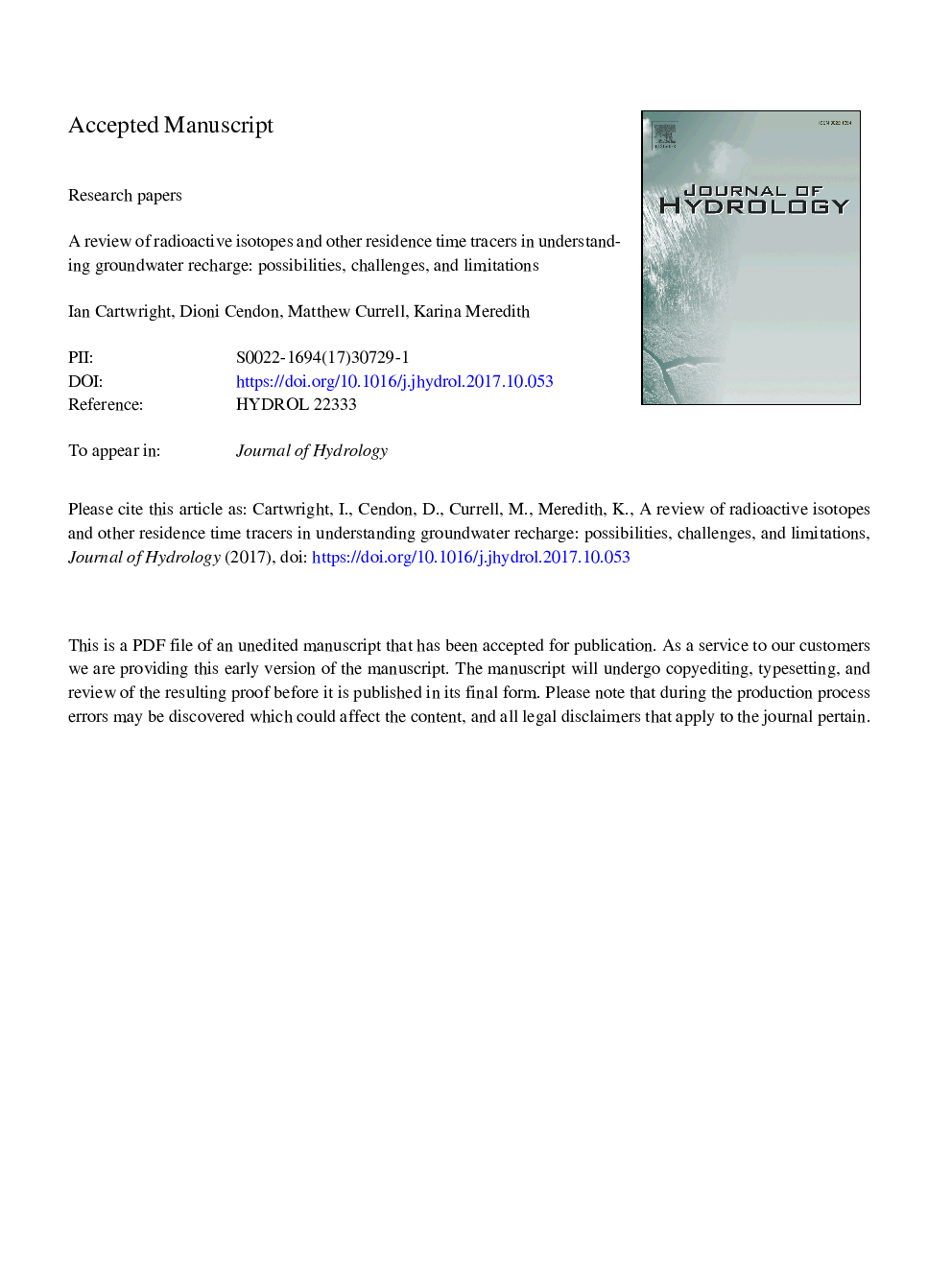| کد مقاله | کد نشریه | سال انتشار | مقاله انگلیسی | نسخه تمام متن |
|---|---|---|---|---|
| 8895299 | 1629899 | 2017 | 53 صفحه PDF | دانلود رایگان |
عنوان انگلیسی مقاله ISI
A review of radioactive isotopes and other residence time tracers in understanding groundwater recharge: Possibilities, challenges, and limitations
ترجمه فارسی عنوان
بررسی ایزوتوپ های رادیواکتیو و دیگر ردیاب های محل اقامت در درک شارژ آب های زیرزمینی: احتمالات، چالش ها و محدودیت ها
دانلود مقاله + سفارش ترجمه
دانلود مقاله ISI انگلیسی
رایگان برای ایرانیان
کلمات کلیدی
آب های زیرزمینی، شارژ، ایزوتوپهای رادیواکتیو، ژئوشیمی،
موضوعات مرتبط
مهندسی و علوم پایه
علوم زمین و سیارات
فرآیندهای سطح زمین
چکیده انگلیسی
Documenting the location and magnitude of groundwater recharge is critical for understanding groundwater flow systems. Radioactive tracers, notably 14C, 3H, 36Cl, and the noble gases, together with other tracers whose concentrations vary over time, such as the chlorofluorocarbons or sulfur hexafluoride, are commonly used to estimate recharge rates. This review discusses some of the advantages and problems of using these tracers to estimate recharge rates. The suite of tracers allows recharge to be estimated over timescales ranging from a few years to several hundred thousand years, which allows both the long-term and modern behaviour of groundwater systems to be documented. All tracers record mean residence times and mean recharge rates rather than a specific age and date of recharge. The timescale over which recharge rates are averaged increases with the mean residence time. This is an advantage in providing representative recharge rates but presents a problem in comparing recharge rates derived from these tracers with those from other techniques, such as water table fluctuations or lysimeters. In addition to issues relating to the sampling and interpretation of specific tracers, macroscopic dispersion and mixing in groundwater flow systems limit how precisely groundwater residence times and recharge rates may be estimated. Additionally, many recharge studies have utilised existing infrastructure that may not be ideal for this purpose (e.g., wells with long screens that sample groundwater several kilometres from the recharge area). Ideal recharge studies would collect sufficient information to optimise the use of specific tracers and minimise the problems of mixing and dispersion.
ناشر
Database: Elsevier - ScienceDirect (ساینس دایرکت)
Journal: Journal of Hydrology - Volume 555, December 2017, Pages 797-811
Journal: Journal of Hydrology - Volume 555, December 2017, Pages 797-811
نویسندگان
Ian Cartwright, Dioni Cendón, Matthew Currell, Karina Meredith,
